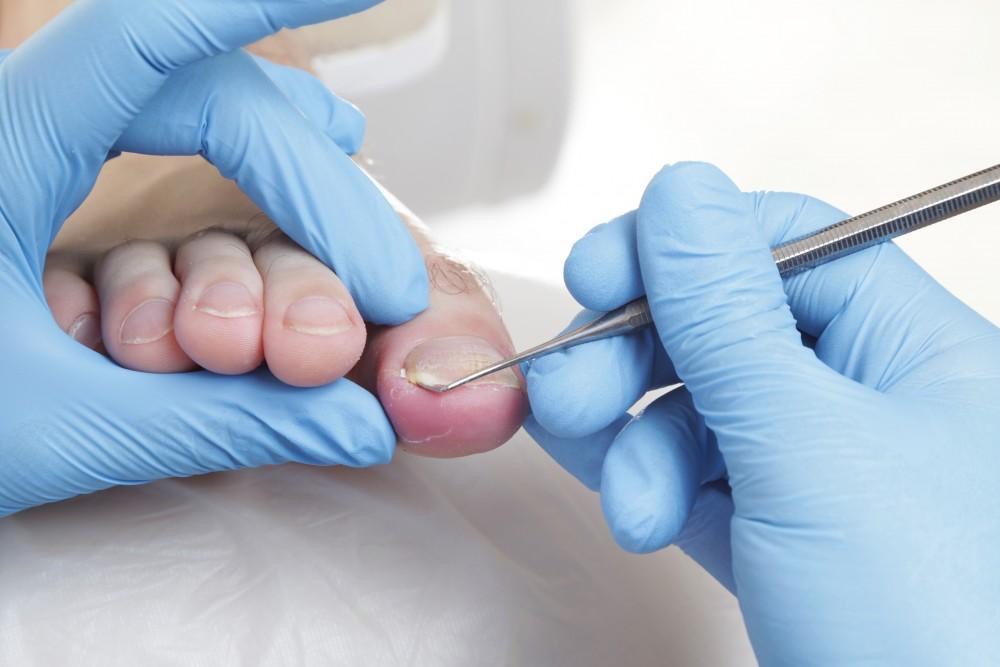An ingrown toenail, scientifically named onychocryptosis, is triggered when the corner or side of a toenail grows into the flesh surrounding it. This causes an excruciatingly painful condition that often results in redness, swelling, and infection, seriously affecting a person’s mobility and quality of life.
Understanding the Anatomy of an Ingrown Toenail
The condition known as ingrown toenail, or onychocryptosis, occurs when the edge of your toenail grows into your skin. This could lead to an infection, causing the toe to turn red and inflamed, making it a painful condition that could interfere with your daily activities.
The Spectrum of Ingrown Toenail Severity
The severity of an ingrown toenail will differ between individuals. In some instances, it could be the side of the nail merely penetrating the skin, barely visible to the naked eye. Others may experience a more noticeable intrusion where the corner or a tiny splinter of the nail pierces the skin. Should this lead to an infection, the toe will then appear red, swollen, and will be pain-ridden.
Identifying Causes of Ingrown Toenails
The causes of ingrown toenails are manifold, with poor nail trimming often being held accountable. However, several other factors play a significant role in the development of this condition:
- Nail Shape – Nails that are curved are more prone to becoming ingrown compared to flat ones. The shape of the nail is generally a genetic trait, but it can also be altered due to trauma or pressure exerted by shoes;
- Inappropriate Nail Trimming – Cutting down the sides or leaving a sharp corner can lead to an ingrown toenail;
- Tight Footwear – Shoes that don’t fit well can increase the pressure between the skin and nail fold, leading to an ingrown toenail;
- Trauma – Any kind of trauma can change the shape of the nail resulting in an ingrown toenail;
- Pressure from Adjacent Toe – Pressure from a neighboring toe can cause a toenail to grow inwards;
- Thick Toes and Swelling – Individuals with thicker toes and those who experience foot swelling are more vulnerable to developing ingrown toenails.
Recognizing Signs and Symptoms
Pain is the most recognizable symptom of an ingrown toenail, which may begin as a slight discomfort and gradually intensify. The toe may not necessarily be infected initially, but once the nail penetrates the skin, the likelihood of an infection increases. Left untreated, the infection can spread, leading to an inflamed and red toe (paronychia). If neglected further, pus may develop and there could be excessive skin growth around the infected area.
Proactive Steps to Prevent Ingrown Toenails
The old adage “prevention is better than cure” rings especially true when it comes to foot care. The first line of defense against ingrown toenails lies in how you maintain your feet’s health. There are several preventative measures that you can take to decrease the chance of experiencing this painful condition:
- Correct Nail Trimming – Cut your toenails in a straight line, following the natural shape of your toe. Do not dig into the sides while cutting, as this may lead to an ingrown toenail. If your nail is highly curved, it is advisable to visit a podiatrist to avoid potential complications;
- Dispel the Myths – Some believed that cutting a V into the end of a nail can cure an ingrown toenail—this is not true. The shape of the nail is determined by the growth area at the toe’s base and not by its end;
- Comfortable Footwear – Avoid shoes and socks that are too tight. Inappropriate footwear pressurizes the toenails, pushing them against the skin and increasing the risk of an ingrown toenail;
- Hygiene is Key – Keep your feet clean to stop infections. This is especially important if an ingrown nail is starting to develop.
Seeing a Podiatrist
Managing excessive curvature or persistent ingrown toenails often requires professional assistance. Regular visits to a podiatrist can help prevent the toenail from becoming a problem.
Podiatrists can:
- Extract the offending piece of nail impinging on the skin;
- Conduct a culture of the nail, if necessary
- Propose suitable medications
- Perform surgical correction of the nail, if required
The role of podiatrists in foot health cannot be understated. Taking action promptly is crucial, as without proper treatment, minor foot issues can swiftly morph into serious health risks.
Conclusion
In essence, the key to combating ingrown toenails lies in effective prevention strategies and timely intervention. Properly trimming nails, ensuring good foot hygiene, and wearing appropriate footwear can significantly reduce the risk of developing this problem. Furthermore, certain high-risk groups, such as diabetes patients or those with poor blood circulation, must be diligent in seeking professional podiatric advice rather than opting for self-treatment.


